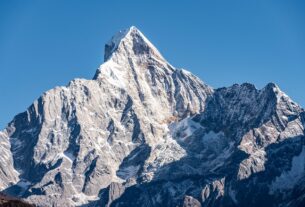Explore Bangkok’s most luxurious hotels for 2025. Romantic riverside stays, private spas, and top-tier service await sophisticated travelers and couples.
🌴 Get Your FREE Bahamas Checklist!
Perfect for planning your island escape 🌊
We respect your privacy. Unsubscribe anytime.
Powered by greattravelnews.com
Luxury Hotels in Bangkok: Indulgent Retreats in the World’s Most Visited City
Bangkok remains the world’s most visited city in 2025—and with good reason. A vibrant blend of culture, cuisine, and cosmopolitan energy, it attracts travelers seeking both adventure and indulgence. For luxury-seeking couples, Bangkok’s elite hotels offer opulent escapes along the Chao Phraya River and within the city’s buzzing districts. Here’s your curated guide to the finest accommodations in Thailand’s dazzling capital.
What Makes Bangkok’s Luxury Hotels Unique?
Bangkok’s luxury scene is defined by contrasts. You can sip champagne above the skyline in Sukhumvit, enjoy a private Thai massage in a 100-year-old villa, or take a boat directly to your riverside hotel. The best properties here offer:
-
Exquisite dining by Michelin-starred chefs
-
Spa sanctuaries rooted in Thai healing traditions
-
Private butlers, limousines, and bespoke concierge experiences
-
Romantic settings—from candlelit riverside terraces to infinity pools in the sky
5 Luxury Hotels in Bangkok Ideal for Couples
1. The Peninsula Bangkok – Riverside Icon with Regal Charm
Located along the Chao Phraya River, The Peninsula is a sanctuary of tranquility amidst the city’s buzz. Its understated elegance and superior service make it perfect for couples looking to unwind.
-
Riverfront infinity pool and sunset bar
-
Peninsula Spa with private couples’ suites
-
Complimentary riverboat shuttle to nearby temples and markets
👉 Reserve your luxury stay at The Peninsula Bangkok
2. Mandarin Oriental Bangkok – Colonial Elegance with a Thai Soul
One of Bangkok’s most storied hotels, the Mandarin Oriental blends colonial architecture with contemporary luxury. For romantic moments, few places match its timeless charm.
-
Author’s Lounge for afternoon tea
-
Thai cooking classes and private dinners
-
Award-winning spa and riverside pool deck
👉 Book your suite at Mandarin Oriental Bangkok
3. Four Seasons Hotel Bangkok at Chao Phraya River – Modern Riverside Opulence

A newer addition redefining Bangkok’s luxury scene, this Four Seasons offers modern design and world-class amenities in a tranquil setting.
-
Art-filled interiors and garden courtyards
-
Infinity pools overlooking the river
-
On-site art gallery and Michelin-quality cuisine
👉 Explore rooms at Four Seasons Bangkok
4. Siam Kempinski Hotel – Resort-Style Bliss in the City Center
Tucked behind the Siam Paragon shopping center, this hotel feels like a peaceful resort in the middle of bustling Bangkok.
-
Lagoon-style saltwater pools
-
Balcony suites with direct pool access
-
Easy access to Siam and Sukhumvit via BTS Skytrain
👉 Discover stays at Siam Kempinski Bangkok
5. The Siam Hotel – Boutique Luxury with Art Deco Flair
For a more private and personalized experience, The Siam offers just 39 suites and villas, each uniquely designed.
-
Riverside setting with a private pier
-
Antique decor, art collections, and Muay Thai studio
-
Complimentary boat service to Bangkok’s cultural sites
👉 Book your stay at The Siam Hotel
Romantic Activities for Couples in Bangkok
-
Sunset dinner cruises on the Chao Phraya River
-
Couples spa rituals featuring traditional Thai massages
-
Private long-tail boat tours of the city’s canals
-
Rooftop dining at Vertigo, Mahanakhon SkyBar, or Sirocco
-
Temple visits by dawn, when the air is still and peaceful
Travel Tips for Booking a Luxury Bangkok Hotel in 2025
-
Book early for riverside properties, especially between November–March
-
Look for luxury deals during the rainy season (May–October)
-
Use preferred guest programs like Leaders Club or DISCOVERY for perks
-
Ask hotels for honeymoon or couple packages, which often include private dinners, spa credits, or late checkouts
Frequently Asked Questions (FAQs)
Q: What is the best area in Bangkok for luxury hotels?
A: The Chao Phraya River area offers romantic ambiance and easy access to historical attractions, while Sukhumvit and Siam provide upscale urban energy.
Q: Are luxury hotels in Bangkok affordable compared to other cities?
A: Yes. Bangkok offers exceptional value—5-star hotels often cost significantly less than equivalents in Tokyo, Paris, or London.
Q: Do these hotels provide airport transfers or butler services?
A: Most offer private airport transfers, and many include butler or concierge services for suite guests.
Final Thoughts
Bangkok’s top-tier hotels offer more than plush beds and world-class service—they provide curated experiences, cultural elegance, and serene moments amid the city’s excitement. For luxury couples, these properties are romantic sanctuaries worth every baht.




